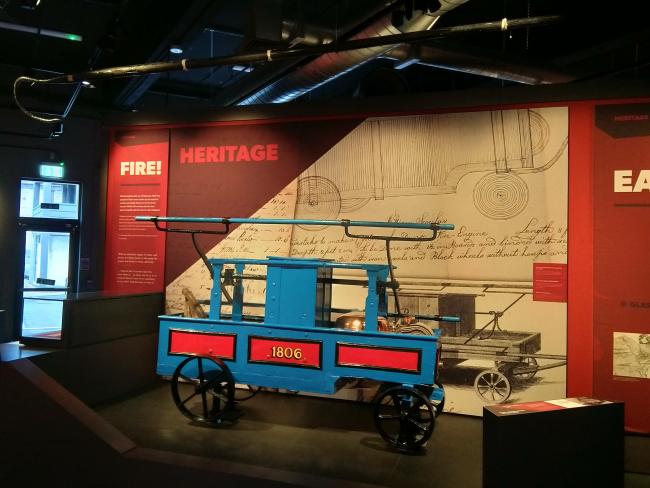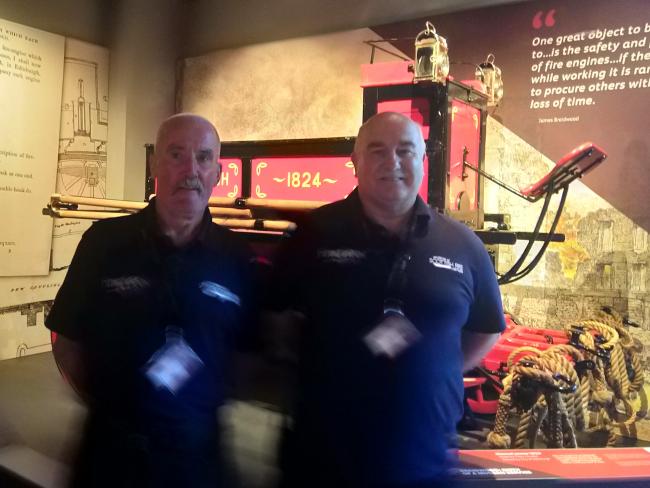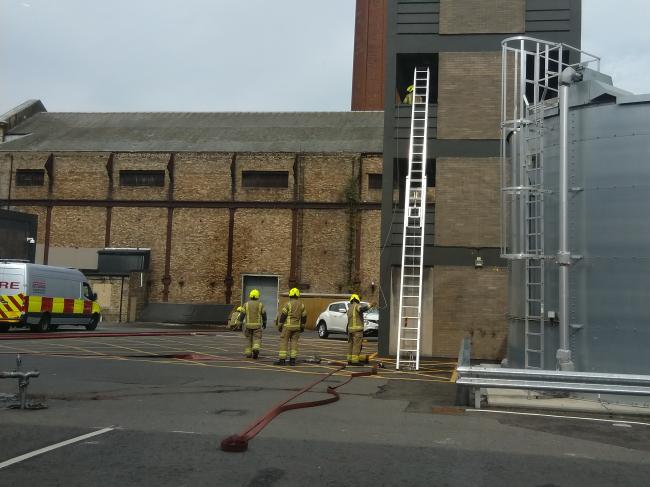
On Saturday 17 June, the Museum of Scottish Fire Heritage in Dryden Place had a preview opening for local residents.
The museum tells the story of fire fighting in Edinburgh and Scotland, from medieval times to the present day.
A 1703 Edinburgh act appointed a 'Company for the quenching of Fire' and specified 'Rules to be observed by the Inhabitants thereanent'. Nevertheless, the system of fire fighting was voluntary and amateurish. There were unpaid fire masters who would be responsible for calling assistants when a blaze broke out. Insurance companies also had their own fire brigades, whose staff were untrained and uncoordinated, sometimes competing against each other for water while attempting to fight a fire.
Edinburgh instituted the world's first municipal fire service in 1824. James Braidwood, the first 'Master of Engines', developed a scientific approach to fire fighting and organised the brigade with clear lines of control. Since then, the technology of fire fighting has developed beyond recognition, but the need for clear organisation and communication, and the bravery of firefighters, remains essentially unchanged.

The exhibition is laid out in chronological order. The oldest object on display is a 16th-century cleike (a long pole with a hook), used to pull burning material from buildings. The fire engines range from a hand-pumped Duns engine (which was still in use up to the Second World War) to a 1936 Daimler 'Limo', which was the first to give cover to firefighters en route to a blaze.
Both the textual and touchscreen interpretations complement the artefacts perfectly. Some are targeted at smaller people, such as the firefighters' costumes and a game in which you choose the correct type of fire hoses, connectors and 'branches' (nozzles), examples of which are on display.

The exhibition guides, including Jim and Bob (pictured), were all former firefighters, and were delighted to answer questions. Large windows look onto the drill yard of McDonald Road Fire Station (no longer with the ship) to allow visitors to view firefighters training.
The guides gave expert commentary on what was going on: I'd no idea that there's a special method to placing and climbing ladders. When the museum opens, they and other volunteers will be giving guided tours, to the public and community, including schools.
If we hadn't spent a lot of time hearing stories from Jim, Bob and colleagues, we might have been able to finish the exhibition properly in the one-and-half-hours available.

It is a long-awaited homecoming for the museum: McDonald Road Fire station housed the previous 'Museum of Fire' for 25 years, until it moved to the old fire station in Lauriston Place in 1986. The Scottish Fire and Rescue Service (SFRS) sold that building to the University of Edinburgh in 2016, when the collection went into storage in various locations across central Scotland.
The SFRS anticipated the new Museum would be open in 2018, but the rebuilding of the fire station took much longer than anticipated, and the new museum will be opening its doors to the public later this year.
Entry will be free, but with a donation of £3 suggested. There are more details on the Museum of Scottish Fire Heritage website and Facebook pages.—David Sterratt


